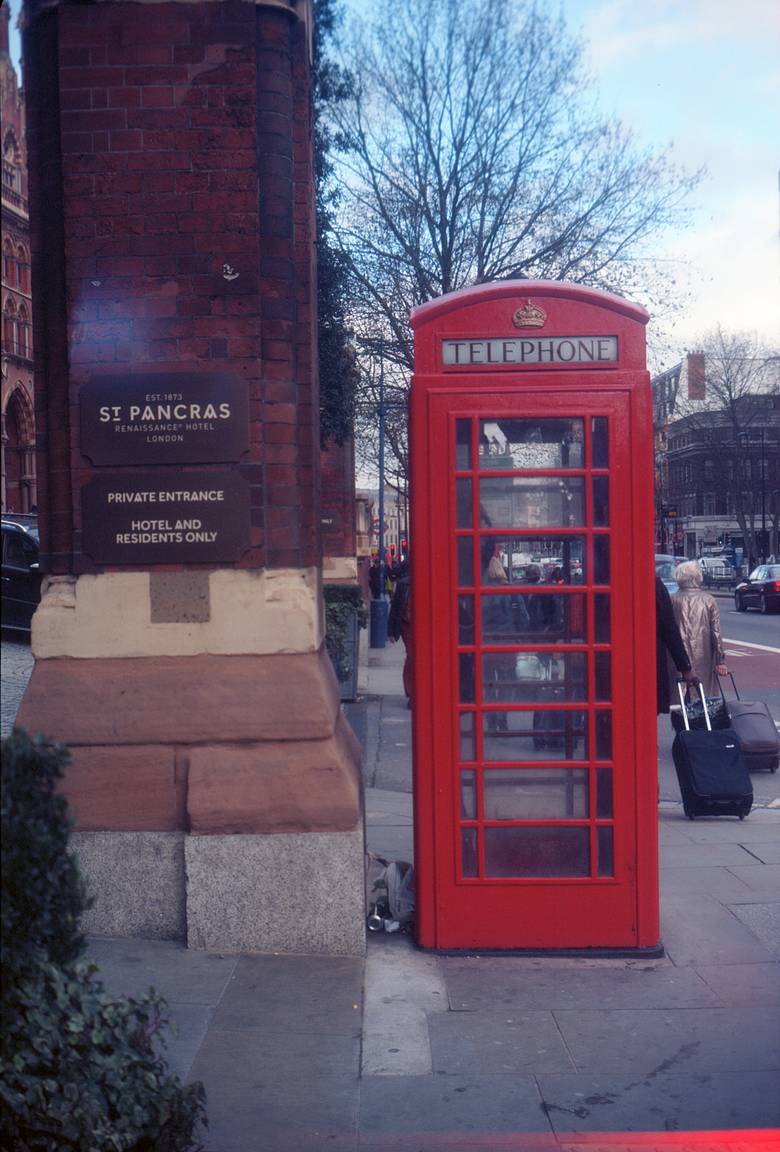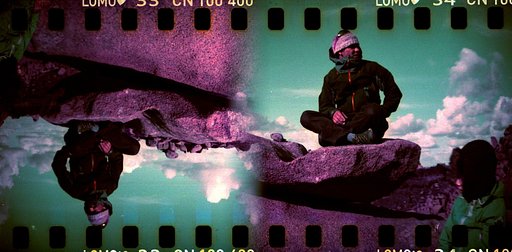Kershaw Eight-20 King Penguin: 1950s Lomography?
6 21 Share TweetI’m sure you’re all aware of Lomography’s new folding camera, the Belair X 6-12. While I’m waiting (impatiently!) for my Globe Trotter to be delivered I thought I’d explore its distant ancestry by revisiting some of my old folding cameras. First up, the Kershaw Eight-20 King Penguin.
Made in Britain by the Kershaw-Soho company in 1951, the King Penguin must have seemed quite old-fashioned and primitive, even back then.
Folding cameras were among the first portable cameras ever made. The lens needs to be some distance away from the film, but this makes for an unwieldy camera to carry around. The solution? Build a collapsible frame, then add a flexible cloth or leather bellows to keep the light out. Extend the frame (and bellows) for use, then fold it back up again to fit the camera in your pocket for travel.

This type of camera has been around since the start of the 20th century, so, by 1951, it was already quite an old style. The King Penguin is a very basic example, taking 120 roll film which is still widely available today, including in the Lomography store. It fits only 8 rectangular images per film, each one 6cm x 9cm, which is huge (eight pictures on 120 film, thus “Eight-20”)! Back in the day, they probably wouldn’t bother producing enlargement prints from these, you’d just get a contact print (hold the negative right on the paper, then expose to light for the right time and develop — no need for any special equipment, just a darkroom and some chemicals).
It has a plastic lens with no focusing mechanism and only two shutter options: “I” (instant) which is about 1/50s, and “B” (bulb), which keeps the shutter open as long as you press down on the release button. You get a choice of two apertures — f11 and f16 — which aren’t created by an opening leaf mechanism, but instead are two separate disks with circular holes in, that get moved in and out of place by a lever. It doesn’t have a glass viewfinder; instead, it has a “sports finder”: two popup metal frames on one edge, with different sized rectangular holes. When you hold them up to your eye, and line up the holes, everything you see between the frames will end up in the image. Amazingly, it does have flash sync, but via an ancient ASA bayonet socket, which is unlikely to work with anything you can find today.
35 years earlier, Kodak and Voigtländer were producing similar cameras with glass lenses, focus mechanisms and variable shutters and apertures (I might write more about the Autographic Brownie in another review). Over the next five-to-ten years, more familiar-looking 35mm cameras such as compact rangefinders and SLRs would become more widespread, so in 1951 the King Penguin must have seemed like a toy to any serious photographer. Kershaw did produce some more serious cameras, also named after birds: there was a Peregrine, and a Curlew, plus an earlier version of the King Penguin called just “Penguin” which had a few more features, like a “brilliant” finder and a primitive focus mechanism.

If there had been a Lomography movement in the 1950s, the King Penguin would have been perfect for them. The lack of controls becomes an advantage for quick shots — there’s nothing to do to set the camera up! The plastic lens produces images which are gloriously soft around the edges, but remember it won’t focus close — maybe 2 metres away at best. They used to sell an accessory close-up lens for portraits. My own copy seems to have a lens which gives low-contrast images, despite being completely clear to the visible eye (normally this happens when your lens is fogged, covered in fungus or scratches). Images from this camera have a totally old-fashioned look, without needing to do any funky processing or use expired film.
I got to here writing this review, and realized I’d never put any color film through this beast. So, I stopped writing, dug a roll of Ektar out of the bottom of my bag (no idea how long it had been lying there for, or where it came from!) and took my King Penguin to work with me, taking pictures along the way. And… just .. wow! Low contrast, did I say? Nope! Soft edges, did I say? Well, maybe a little, and the colors on Ektar… again, wow! Well, see for yourselves:
If you’re still saving up your piggies for a Belair, you might do worse than pick one of these up to play with in the meantime. Mine is in absolutely mint condition, it looks brand new, and it didn’t cost much. Some practical advice based on experience: stick to f11 for 100 ISO film, even in reasonably bright sunlight – only use f16 in extreme brightness, like snow or beach scenes, or with 200 ISO film. Don’t even think about using this in overcast conditions without a fast film (400 might be OK) — well, unless you want to use the bulb mode and time it yourself, which is also good for long-exposure night shots. Multiple exposures are easy — just don’t wind the film on between frames! When you do wind on, like most cameras of this type there’s a red plastic window on the back which you use to line up the frame numbers — wind it carefully until the next number shows.
You’ll certainly turn heads using this retro-styled beauty on city streets!
geschrieben von keefmarshall am 2012-12-07 in #Ausrüstung #medium-format #120 #review #camera #folding #bellows #kershaw #kershaw-eight-20-king-penguin #king-penguin #review-old






























6 Kommentare